A 19th-Century Inkstand from Etna, Ohio
An Examination Of The Work Attributed To Swiss Potter Jacob Rudolph (1822-63), Working In Ohio
By Justin W. Thomas - March 12, 2021
The earliest forms of inkwells date back to ancient times, especially with Egyptians, where these type of objects can be found in some of Americas most prominent art museums today, such as the Metropolitan Museum of Art in Manhattan, the Philadelphia Museum of Art and the Museum of Fine Arts, Boston. The earliest forms were made from hollowed out stone, although, over time, they were eventually made into clay containers. During the Middle Ages and Renaissance, inkwells became a lot more ornate, often embellished with gold or silver, even though for many centuries it was considered a lowly task undertaken by a scribe or scrivener on behalf of higher society. The most significant surviving American example may be a salt-glazed stoneware inkstand manufactured in Manhattan in the 18th century, at the Metropolitan Museum of Art in New York City. The base is inscribed New York, July 12th, 1773, William Crolius. It was previously owned by noted New York collector Barry Cohen until it sold at Sothebys in 1991 to Pennsylvania collector Dr. David Bronstein, who gifted it to the Met in 2012. Potters all over America manufactured inkwells in the 18th and 19th centuries, as well as potteries in Ontario in Canada. But inkstands seem to have been a form more popular with potters in the Pennsylvania and Ohio area, as well as potters with a German background. A number of examples manufactured in this area are owned by the Philadelphia Museum of Art and Winterthur. Interestingly, Ohio is actually the state that some of the earliest midwestern inkstands were manufactured in the 1800s, including a stoneware example that is boldly inscribed OHIO on the front and dated April 16, 1829. An Inkstand Made by Jacob Rudolph in Etna, Ohio. According to the book Etna and Kirkersville, written by Morris Schaff (1840-1929) in 1905, The Township of Etna was organized in 1833, and it is in the extreme southwestern corner of Licking County in central Ohio. Between 1815 and 1825, emigrants poured into central Ohio, and by 1830 there were enough settlers in Etna to ask for a local government of their own. The village of Etna was laid out by Lyman Turrell, a Vermonter, in 1832, the lots selling at $3 to $5 each. Schaffs father came from Belmont County, Ohio, in the winter of 1829 or 1830, and after declining to buy what is now a part of the city of Columbus, bought a farm in Etna. Upon that farm on Dec. 29, 1840, the author was born and there spent his early boyhood days until about the age of 10 when the family moved near the village of Kirkersville, some four miles from Etna, founded about 1831 and named for Thomas Kirker (1760-1837), acting governor of Ohio in 1808. It would be difficult to portray the simplicity and naturalness as it was in Etna, when I was a boy, say in 1845 or 1850. There was no class founded on wealth, no one distinguished by either learning, ancestry, achievement, or pretentious estate, we were all on the same level, wore the same homemade clothes, read or studied in dimly lighted rooms or by the light of wood fires, looked each other in the face when we met at each others doors, all unconscious of that restless kingdom known as society, and in blessed, happy ignorance of what is now called refinement and culture, and in a perfect freedom from the weakening, tormenting, pessimistic fastidiousness that afflicts modern life. It is true there were the asperities and crudeness of uncut marble about all social life, but viewed in the light of philosophy born of experience and close observation of this drama called life, the conditions might almost appear ideal, recites Schaff in the book. In connection to this early life in Etna is a fascinating green glazed red earthenware inkstand that was recently discovered in Florida. It is inscribed on three sides: 1852 / Jacob Rudolph / Etna. Even though the inkstand is missing its original inkwell and sander, the inscription is important, seeing there are only a small group of American examples that survive today adorned with so much information. Occasionally, pieces turn up that are dated, but few can be associated with a specific person, place and time, such as this example. United States Federal Census records indicate that Jacob Heinrich Rudolph (1822-63) was an immigrant from Switzerland, and he is documented as a potter in Etna in 1850 and 1860. It is certainly possible that he was working in Etna prior to 1850, although the inkstand is dated only two years after his earliest record of employment. In fact, this important object may have been Rudolphs personal inkstand, perhaps laying witness to some of Rudolphs production and even used for his pottery bookkeeping and other records. It is also important to note that this inkstand is dated the same year that Jacob Rudolph and his wife, Elizabeth, were married on Dec. 26, 1852. The couple is listed with three children in the 1860 Census, but there is no indication that any of them were taught how to manufacture pottery before Rudolphs death in 1863; however, it is certainly possible that author Morris Schaff met Rudolph in his early years as a boy living in Etna. Pottery Production in Etna, Ohio Census records indicate that there were other potters from Switzerland employed in Etna in 1850. It is certainly possible that Rudolph migrated to America in search of prosperity and, upon his arrival, learned the potters trade. Records do not seem to exist that indicate where he originally learned how to manufacture pottery. But if this inkstand is any indication of the wares made in Etna, then production was evidently skilled and accomplished. If it were not for the information inscribed on this inkstand, it would most likely be mistaken for production from another location today. This seems to happen with production from some of the smaller midwestern settlements and religious communities during this period, where production is very similar to the wares manufactured in Pennsylvania. The wares made in Etna were undoubtedly manufactured for local consumption, but they may have been produced for export as well as a way to generate commerce for Rudolph and the local economy. Nonetheless, this inkstand is an important discovery, bringing to light a lesser-known type of midwestern production that should receive more attention today. Sources 1850 United States Federal Census, Etna, Ohio. 1860 United States Federal Census, Etna, Ohio. Schaff, Morris Etna and Kirkersville Boston: Houghton, Mifflin and Company The Riverside Press, 1905.

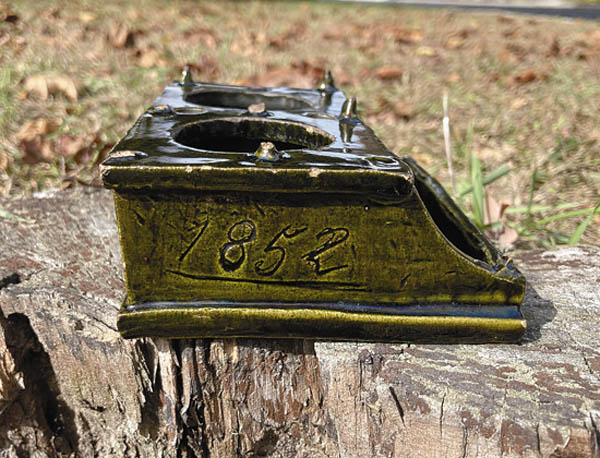
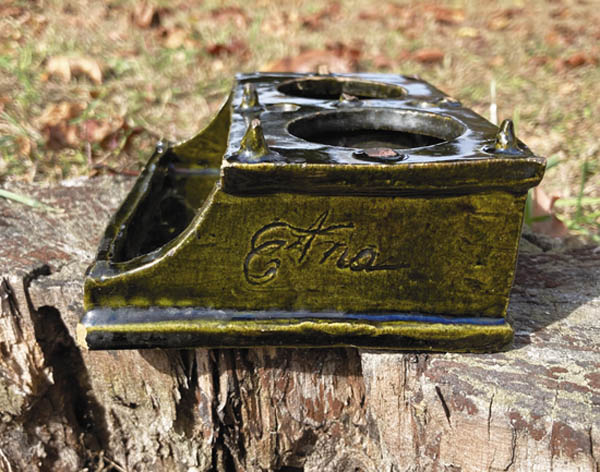

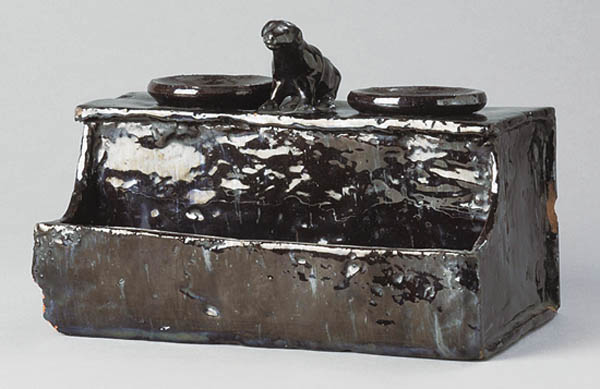
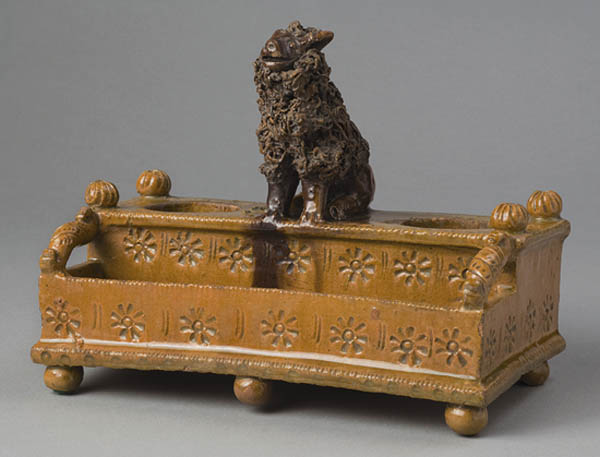
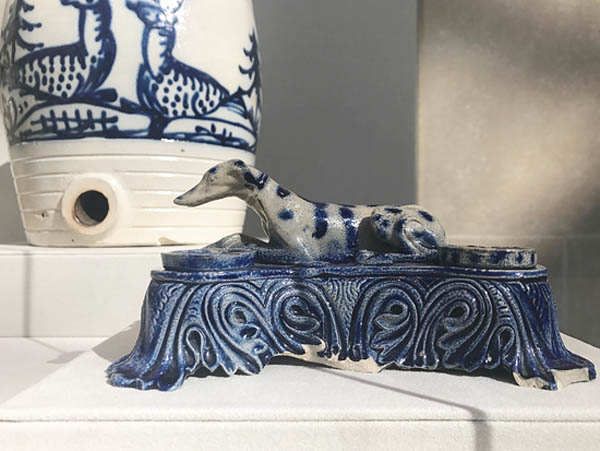

SHARE
PRINT